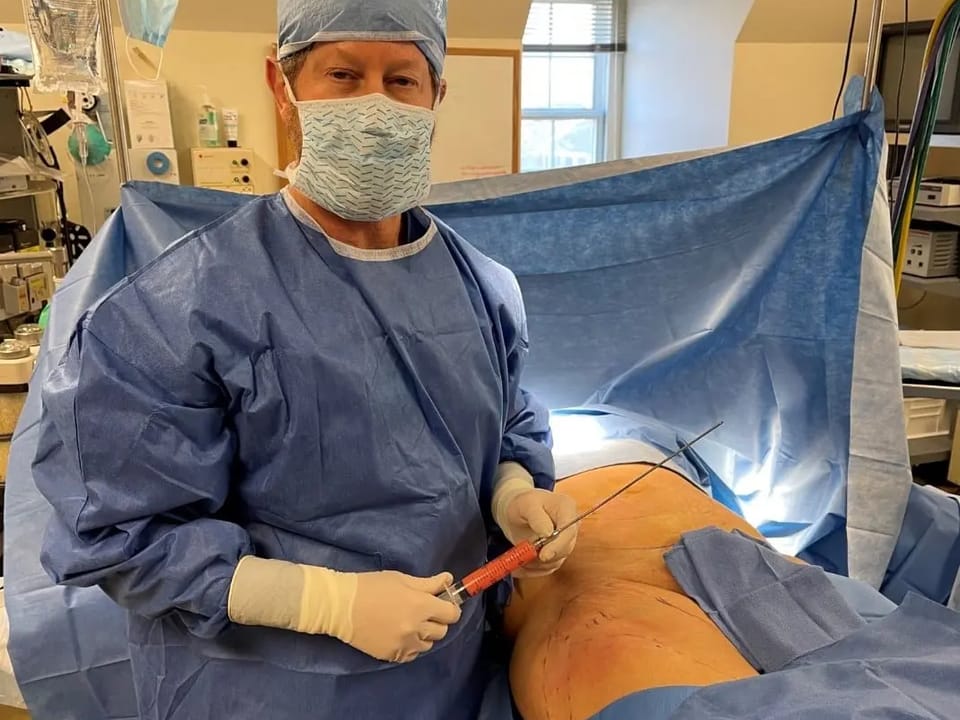HOW LONG DO THE BENEFITS FROM PLASTIC SURGERY LAST?
One of the major benefits of plastic surgery is its long lasting effects. A surgery alone though, is not the only factor which determines the longevity of the results. Triple board-certified plastic surgeon, Dr. David Berman, examines the most common plastic surgical procedures and some of the factors affecting their longevity.
While genetics do play a role in how we age to a certain extent, Dr. Berman believes that there are multiple natural elements which can influence the rate that one ages.
A proper diet plays a very significant role in how one ages and his overall health.
In addition to healthy eating, being active can also slow aging. Being able to deal with stress in a healthy way and getting enough sleep are other important components to staying healthy and aging slowly and gracefully.
A person’s lifestyle can certainly affect the longevity of plastic surgery results. Dr. Berman provides information on specific surgeries and procedures and their lasting results.
PLASTIC SURGERY ON THE BODY
SMARTLIPO/LIPOSUCTION – Dr. Berman has performed well over 1,400 Smartlipo cases in his office under local anesthetic with oral sedation. Dr. Berman feels that if the patient can avoid putting on weight, then the benefits should last forever! It is important to note that skin tone will naturally decrease over time. Eating healthy and exercising can slow this down. Unless a person has incredible genetics,however, it is to be expected that skin tone will get saggier as each decade passes.
TUMMY TUCK – The lasting effects of a tummy tuck are very similar to SmartLipo. If you can maintain your weight, then the benefits will last forever. If you put on significant weight, it may not go to the subcutaneous tissue in the abdomen but instead may go into visceral fat which will cause your belly to bulge outwards. For women, it may go to visceral fat, or depending on their genetic predisposition, those extra pounds may instead end up on their hips or upper arms or bra fat.
LABIAPLASTY – This particular procedure is likely to last a lifetime. It is unlikely that the labia tissue will grow back after either the wedge or trim technique.
BREAST AUGMENTATION- A woman who undergoes a breast augmentation should definitely expect to have to change out her breast implants at least once, and maybe twice, in her lifetime. Determining factors include, how old she was when she got the breast augmentation and how long she lives after. Dr. Berman has a lot of patients, who still have their original implants after 20 years. Dr. Berman strongly disagrees with the popular internet article that advocates arbitrarily changing implants every 10 years. **For more information, please refer to Dr. Berman’s article where he discusses how often a woman needs to change her breast implants.
Having children and even breastfeeding should not lead to a shorter life span of the implant. The current FDA guidelines advocate doing an ultrasound or MRI every 2-3 years, after 5 years.
BREAST REDUCTION – This procedure will often last your lifetime. However, for many women, if they put on significant weight, they may find that their breast size does increase. Also, because glandular breast tissue is always left behind during a breast reduction, if the internal hormone levels of the woman change significantly, this could cause the breasts to increase in size.
GYNECOMASTIA – This procedure either reduces the breast size or the puffiness of the nipple-areolar complex (which is a completely different procedure, but is classified under the heading of “gynecomastia”). In Dr. Berman’s experience, this does not commonly recur. However, this is not a cancer operation and often some glandular breast tissue is left behind (so as not to make them too flat or indented) and this tissue can respond to hormones. A recurrence would be more common in a young male, who has not finished puberty and is growing. (The reason to operate on these young men, is because they can be exceptionally self conscious about their chests and it can dramatically interfere in their social activities)
MASTOPEXY – More commonly referred to as a “breast lift”, there are several types of breast lifts and all of them depend partially on the skin tone. The most stable over time, is the “Wise” pattern scar which leaves a scar around the areolar, vertical and then along the inframammary crease. The other lifts have the advantage of having less scarring but are more prone to the effects of gravity and skin tone. It can be a rather straightforward procedure in the office under local anesthesia, to raise the nipple-areolar complex higher, if it has sagged.
UPPER ARM LIFT or VERTICAL THIGH LIFT – As long as weight does not significantly increase after the procedure, then the benefits of this procedure should last many years. It will never be as tight as your calves but can be significantly improved from its pre-op state. Skin tone will gradually decrease as we age.
FACE
FACELIFT – This type of surgery can really turn back the clock. However, the clock does keep ticking. There are 2 main factors governing longevity of a facelift. Firstly, how much improvement did you experience – ie: how much as the clock of time turned back? Secondly, how fast is your biological clock ticking? Some women are getting facelifts for relatively minor facial laxity. There is nothing wrong with this but it is important to note, that this benefit will likely last a few years, whereas someone with a lot of loose skin etc, will probably get more years of benefit from their facelift.
LOWER BLEPHAROPLASTY – There can be two aspects to this surgery. One is decreasing the fat pads. This usually will last many years. However, this is normal fat that is just herniating outwards. During surgery not all of the fat will be removed, or the patient would look cadaveric. There can be a component of skin removal. Over time skin will usually lose some degree of skin tightness due to the skin or the ligaments stretching.
UPPER BLEPHAROPLASTY – In this procedure, much of the upper eyelid skin is removed. The removing eyelid can stretch. It is also common when we age for the lateral brows to descend and give a similar appearance of hooding of the eyelids, especially laterally. Oftentimes, after a successful upper blepharoplasty, years later it may be necessary to do a lateral brow lift. (sometimes this is done at the same time, depending on what the patient’s concerns are).
OTOPLASTY – This surgery is generally done to decrease the protrusion of the ears from the head. This usually will not recur.
FAT GRAFTING TO THE FACE – It is important to realize that when fat is grafted to the face about 60-90% of the fat will survive. This means it is not uncommon to want additional fat grafting a few months after the initial procedure. However, once this is done and you have the optimum amount of fat, this will last for many years. Nevertheless, the patient will continue to age which will include losing fat in their face, so the patient should expect to need future fat grafting or fillers in a few years.
RHINOPLASTY – Typically, this surgery will not need to be redone with time. However, rhinoplasty has the highest revision rate of any type of plastic surgery in the early phase. Dr. Berman no longer does rhinoplasties since he prefers to focus on these other operations.
Contact us for a consultation!
Contact us for a consultation







